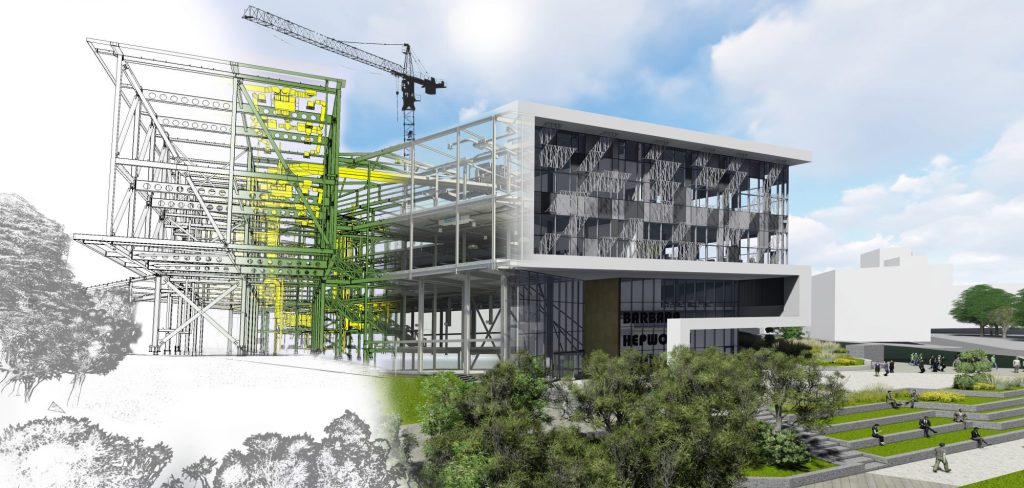In an era of rapid technological advancement and evolving construction practices, the ability to future-proof projects has become essential for success in the construction industry. Building Information Modeling (BIM) management stands as a cornerstone in achieving this goal, offering a comprehensive approach to planning, executing, and managing construction projects. In this blog, we’ll explore the concept of future-proofing projects through effective BIM management, examining its significance, key principles, and practical applications in ensuring project success in a dynamic and ever-changing environment.
Understanding Future-Proofing in Construction
Future-proofing in construction refers to the proactive strategies and measures undertaken to anticipate and address potential challenges and changes that may arise over the lifespan of a project. This includes considerations such as technological advancements, regulatory requirements, sustainability goals, and market shifts. Future-proofing aims to ensure that projects remain relevant, resilient, and adaptable to evolving circumstances, thereby maximizing their longevity, value, and impact.
The Role of BIM Management in Future-Proofing Projects
BIM management plays a pivotal role in future-proofing projects by providing a structured framework for integrating technology, data, and collaboration throughout the project lifecycle. Key aspects of BIM management that contribute to future-proofing include
Strategic Planning: BIM management begins with strategic planning, where project stakeholders define goals, objectives, and BIM requirements aligned with project outcomes. By identifying potential risks and opportunities early in the planning phase, project teams can develop strategies to future-proof the project against unforeseen challenges.
Standardization: Standardization of BIM workflows, protocols, and data formats ensures consistency and interoperability across project teams and disciplines. This enables seamless collaboration, data exchange, and integration of new technologies and systems as the project evolves.
Collaboration: BIM management fosters collaboration and information sharing among project stakeholders, promoting transparency, communication, and teamwork. By breaking down silos and facilitating cross-disciplinary collaboration, BIM management enables project teams to adapt to changing requirements and respond effectively to emerging challenges.
Data-driven Decision Making: BIM management emphasizes the importance of data-driven decision-making, leveraging BIM data to inform project planning, design, construction, and operations. By harnessing the power of data analytics and predictive modeling, project teams can anticipate future trends and optimize project outcomes.
Continuous Improvement: BIM management is an iterative process that involves continuous evaluation, refinement, and optimization of BIM workflows and practices. By embracing a culture of continuous learning and improvement, project teams can adapt to changing technologies, methodologies, and market dynamics, ensuring the long-term success and sustainability of their projects.
Practical Applications of BIM Management in Future-Proofing Projects
Adaptive Design: BIM management enables project teams to create adaptive designs that can accommodate future changes and expansions. By incorporating flexibility into design parameters and using parametric modeling techniques, projects can easily adapt to evolving requirements without the need for costly redesigns or modifications.
Lifecycle Management: BIM management facilitates the integration of asset lifecycle management principles into project planning and execution. By capturing and managing data throughout the project lifecycle, project teams can optimize asset performance, minimize lifecycle costs, and extend the lifespan of built assets.
Sustainability Integration: BIM management supports the integration of sustainability principles into project design and construction. By analyzing environmental data, simulating energy performance, and optimizing resource utilization, projects can achieve higher levels of sustainability and resilience, reducing their environmental footprint and future-proofing against regulatory changes and market demands.
Risk Management: BIM management enables project teams to identify, assess, and mitigate risks proactively throughout the project lifecycle. By conducting comprehensive risk assessments and leveraging predictive analytics, projects can anticipate potential disruptions and develop contingency plans to mitigate their impact, ensuring project continuity and success.
Conclusion
In conclusion, future-proofing projects through effective BIM management is essential for success in today’s dynamic and competitive construction industry. ENGISOFT ENGINEERING – BIM Staffing & BIM Services By embracing strategic planning, collaboration, data-driven decision-making, and continuous improvement, project teams can ensure that their projects remain relevant, resilient, and adaptable to changing circumstances. As technology continues to evolve and market dynamics shift, BIM management will play an increasingly critical role in future-proofing projects, enabling them to thrive in an ever-changing environment.

